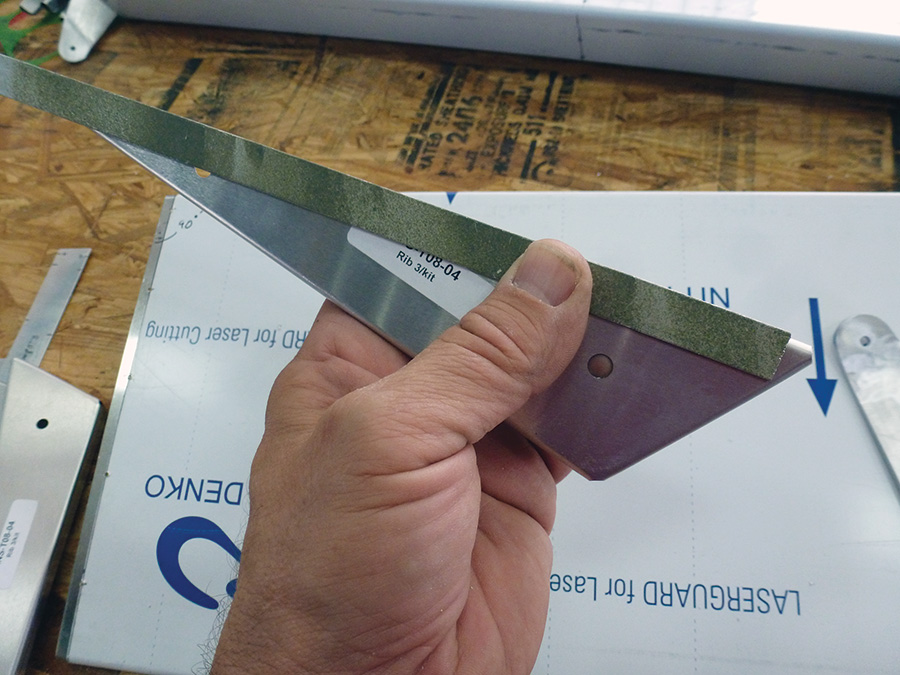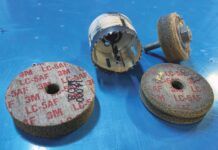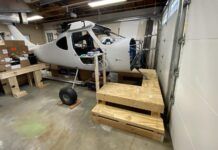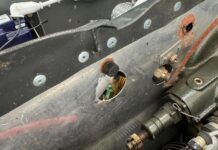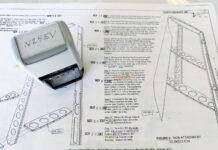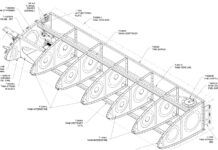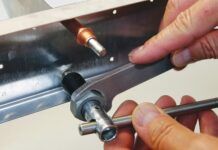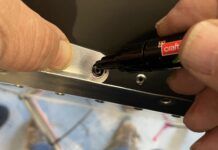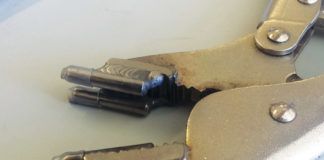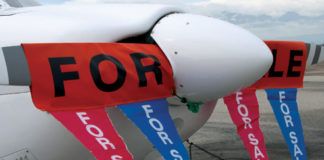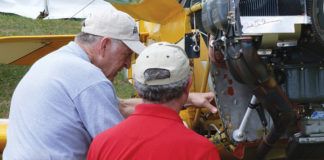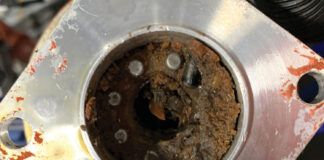Many aircraft kits today come with pre-punched wing- and tail-skins. This makes laying things out and making a square airplane much easier! In many cases, however, you still need to match-drill the skins to the ribs that lie underneath, and the usual way of doing this is to mark the centerline on each rib and line the ribs up underneath the skin until you see the line in the hole-then drill. The drilling is usually quick, but measuring and marking all of those centerlines can take a lot of time and fiddling. Fortunately, there’s an easier way than measuring each rib from the edge and then connecting the dots-just make a template.
We find that the easiest way to do this is to use a piece of hardware store aluminum angle-the kind you don’t want to build into your airplane. Hardware store angle has no inside radius, which makes it perfect for use as a marking template. The rib web and flange will nest smoothly into the inside angle, regardless of the bend radius. All you need to do is measure the first rib (from the outside edge of the flange, which is much simpler than measuring from the web), and mark it accurately. Now line up a length of angle, and mark where you want the line to be. Run this through your bandsaw with a fence to make the line straight, smooth it out on a belt sander, and you have a template that will work for that flange depth on all of the ribs. Be sure to allow for the width of the pen line if you want it accurate.
Now nest each rib in the corner and draw quickly across the length of the flange. Voil! You’ll have all of the ribs in your kit marked accurately in no time.


